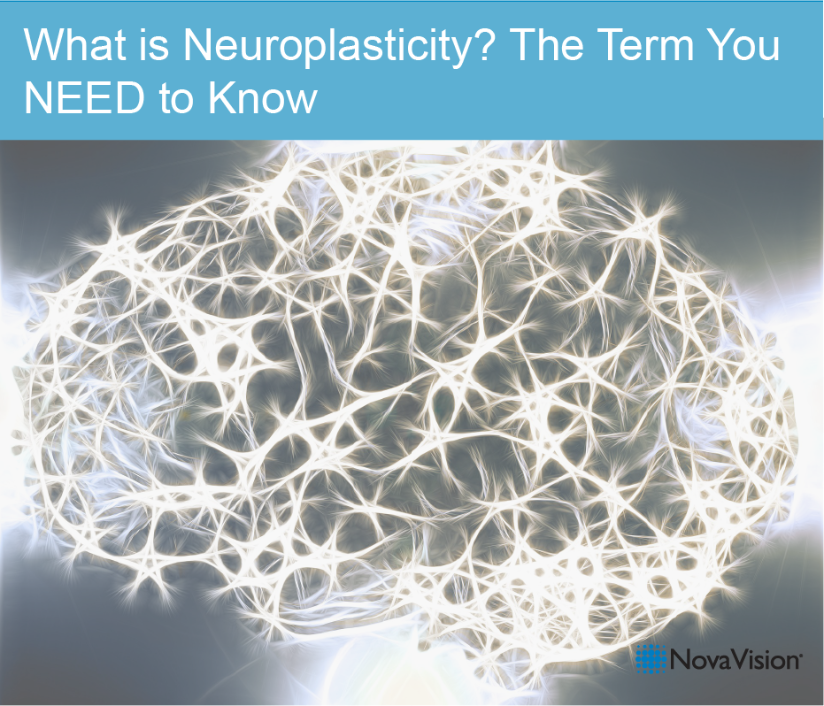
In the days, weeks, and even months following a stroke or traumatic brain injury, you will likely hear nurses and doctors using language and terminology that you are completely unfamiliar with. Not only are you trying to focus on healing and learning to adjust to any number of side effects from this traumatic event, but now the people charged with your care are speaking another language. What’s an anterior cerebral artery? What do electroencephalograms do?
One term you should familiarize yourself with during this unfamiliar and sometimes frustrating time is “Neuroplasticity”.
What Does Neuroplasticity Mean?
The actual word Neuroplasticity is derived from the root words neuron and plastic. Within this term, the word neuron refers to the nerve cells in your brain. Every particular neural cell is made up of an axon and dendrites. Each one of these cells is linked to another cell by a small space called the synapse. The second part of the word, plastic, refers to the ability to sculpt, mold, or modify.
When you put these words together, the term Neuroplasticity refers to your brain’s natural ability to compensate for injury and to adjust to deal with these changes by creating new neural pathways and adapting as needed.
When a brain is damaged so is the network of neurons that process information. Some networks in the brain however are duplicated and Neuroplasticity enables the activation and usage of alternative routes to process information. The brain in effect develops a bypass mechanism. During your recovery period, your brain will be constantly changing. Neuroplasticity is the brain’s way of adjusting to meet your changing needs.
For centuries, scientists thought the brain was fixed and unchangeable. “Thanks to a recent explosion of research into neuroplasticity, the pendulum has swung towards hopes that brain therapies will become a cure all.
” The reality is exciting yet sobering,” Dr. Pascual-Leone says. “Researchers delving into brain based healing are discovering that changes that benefit one person may be detrimental to another. For that reason neuroplasticity treatments must be backed by science, prescribed to fit each patient and monitored which goes against the plethora of non-prescription brain training type Apps promising benefits to all.”
Pascual-Leone M.D., Ph.D., is Professor of Neurology and an Associate Dean for Clinical and Translational Research at Harvard Medical School. He serves as the Director of the Berenson-Allen Center for Noninvasive Brain Stimulation at Beth Israel Deaconess Medical Center, is a practicing behavioral neurologist and is Chairman of the NovaVision Scientific Advisory Board.
Why Does It Matter To Me?
Neuroplasticity matters to you or your loved one as the patient because, if harnessed and carefully guided, plasticity can enhance and speed up recovery and restore lost function. It’s a simple idea that can yield powerful results. Not only is this a factor in your recovery from stroke or brain injury, but also Neuroplasticity is the basis for many cognitive and physical rehabilitation practices. Pascual-Leone says “There is a real message of hope for all of us in the sense there is an opportunity to overcome difficulties and cope with challenges that life throws at us. In developing some of these interventions, having detailed knowledge of the structures and the systems in the nervous system that give rise to their normal function and the dysfunction is particularly important.”
Ultimately, the theory behind Neuroplasticity is that your brain will continue to build new neural pathways and heal as long as it is challenged by new information in a stimulating environment. Exercising Neuroplasticity won’t heal the damaged parts of the brain, but it does allow for recovery by essentially re programming your brain; you will be able to perform a function that was previously managed by a damaged area of the brain by now utilizing an undamaged area of your brain.
Now that you know a little more about this fifteen-letter word, don’t be afraid to bring it up with your doctor. Recovering from a stroke or brain injury is challenging both for the patient and family alike. Do your homework, educate yourself about every option, and you will continue to heal each day.



